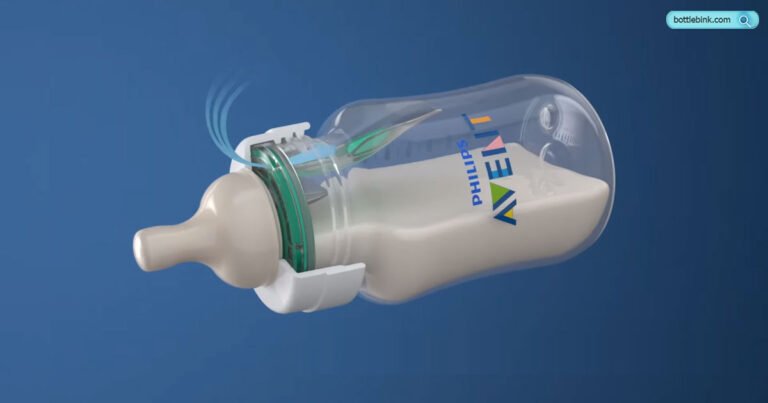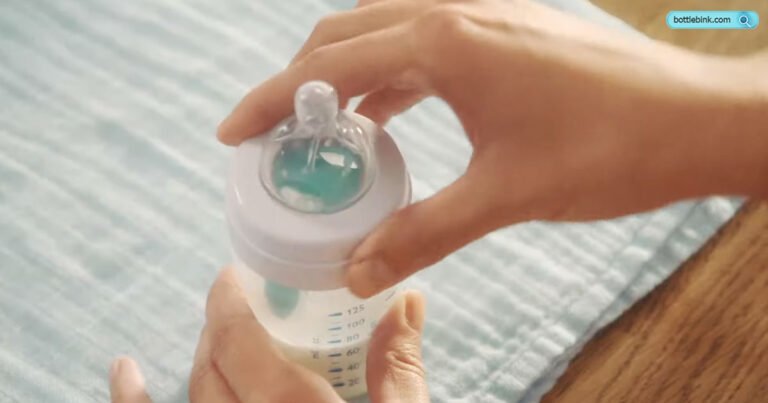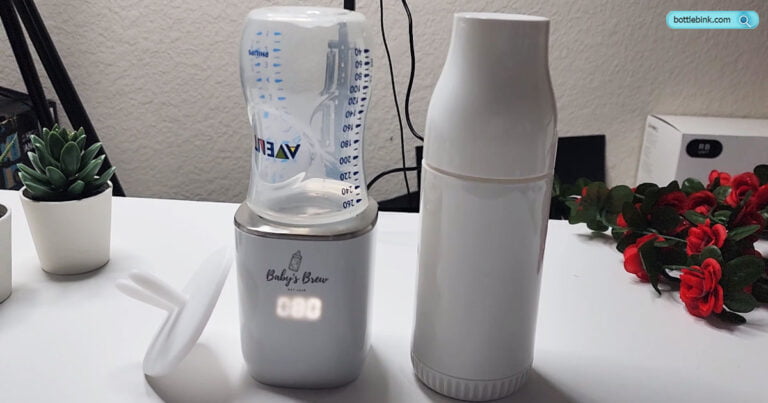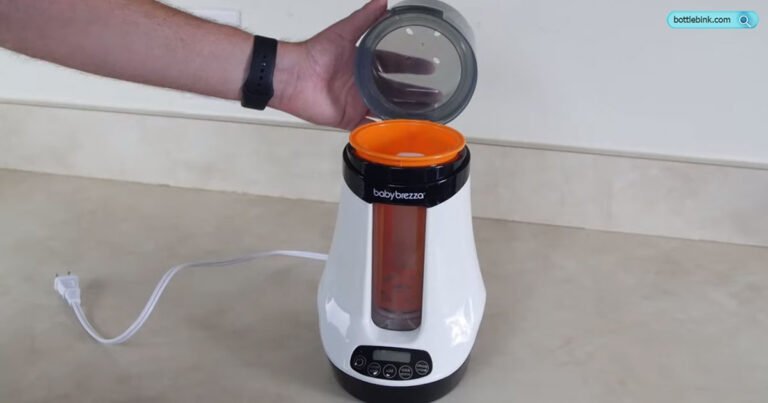Can You Reuse Baby Bottles? The Ultimate Guide
Yes, baby bottles can be reused, but it’s important to replace the nipples for hygiene purposes. When reusing baby bottles, ensure that they are in good condition and replace the nipples before using them for the next baby.
It’s essential to maintain cleanliness and hygiene to protect the baby’s health. Proper cleaning and sterilization are crucial for reusing baby bottles, ensuring the safety and well-being of the baby. Additionally, replacing the nipples and inspecting the bottles for any signs of damage is essential before reuse.
By following these guidelines, parents can safely reuse baby bottles for their children while prioritizing hygiene and cleanliness. It’s essential to consider safety and hygiene when reusing baby bottles to ensure the well-being of the baby.
Risks Of Reusing Baby Bottles
Reusing baby bottles may pose risks as plastic bottles can harbor harmful bacteria. While bottles can be cleaned and sterilized easily, it is recommended to replace the nipples and avoid using cracked or discolored bottles.
Bacterial Contamination
One of the main risks of reusing baby bottles is the potential for bacterial contamination. When bottles are not properly cleaned and sanitized after each use, bacteria can multiply and thrive, posing a serious health risk to your baby.
Potential Health Concerns
Reusing baby bottles without proper cleaning and sterilization can lead to potential health concerns for your little one. Bacteria such as E. coli and Salmonella, which can cause severe stomach infections and other illnesses, can easily breed and spread in dirty bottles. This can put your baby at risk of developing gastrointestinal issues and other infections.
It is important to note that not all baby bottles are meant to be reused. Plastic bottles, in particular, are more prone to bacterial growth over time. These bottles can develop scratches or cracks, which can become a breeding ground for harmful bacteria that are difficult to remove even with thorough cleaning.
When reusing baby bottles, it is crucial to wash them thoroughly with warm soapy water after each use. Additionally, using a bottle brush to reach all the nooks and crannies and rinsing them with hot water can help eliminate any bacteria that may be present. Sterilizing the bottles using boiling water or a steam sterilizer is also recommended to ensure maximum cleanliness.
By taking these precautions and regularly inspecting your baby bottles for any signs of wear and tear, you can minimize the risks associated with reusing baby bottles and keep your little one safe and healthy.
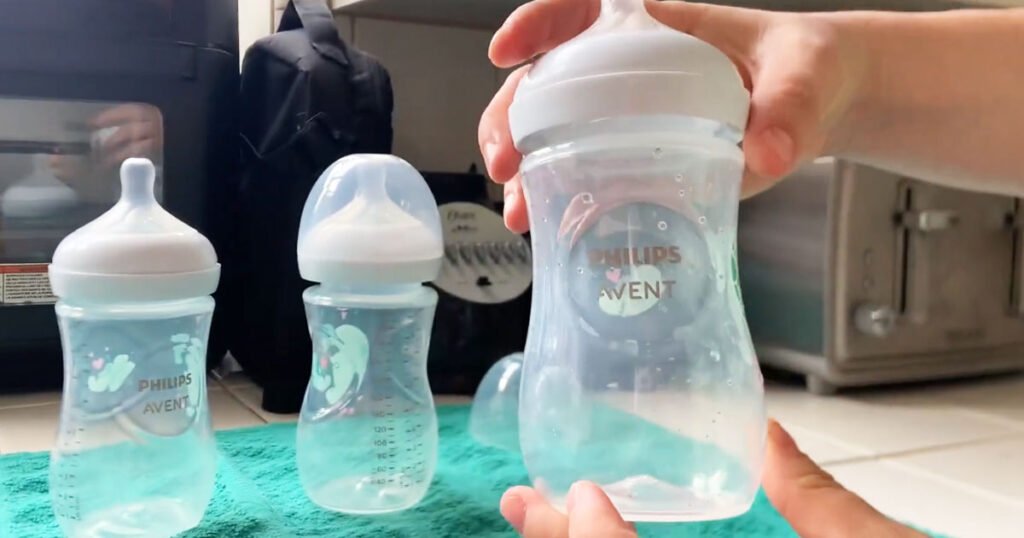
Best Practices For Reusing Baby Bottles
When it comes to reusing baby bottles, it’s crucial to follow the best practices to ensure your baby’s health and safety. Proper cleaning and sterilization methods are key to preventing bacterial growth and maintaining the quality of the bottles.
Thorough Cleaning
Thorough cleaning of baby bottles is essential before every use. To achieve this, disassemble the bottle and wash each part separately with warm, soapy water. Use a bottle brush to reach all the nooks and rinse thoroughly to ensure no soap residue remains.
Sterilization Methods
Sterilization further ensures the safety of reused baby bottles. Boiling the disassembled parts in water for at least five minutes or using a steam sterilizer effectively eliminates harmful bacteria.
Choosing Safe Materials For Baby Bottles
To ensure the safety of your baby, it is generally recommended to replace the nipples of baby bottles when reusing them. While bottles can be easily cleaned and sterilized, damaged or discolored bottles should not be reused. It’s essential to maintain proper hygiene to avoid any potential health risks for your little one.
When it comes to choosing safe materials for baby bottles, it is crucial to consider the potential risks associated with certain substances. The selection of safe materials for baby bottles is paramount in ensuring the well-being of infants. This section explores the importance of opting for BPA-free options and delves into the comparison between glass and plastic baby bottles.
Bpa-free Options
BPA (bisphenol A) is a chemical that is found in some plastics and has been a concern due to its potential health effects. Opting for BPA-free baby bottles is essential to minimize the risk of exposure to this chemical. BPA-free baby bottles are manufactured using materials that do not contain this harmful compound, offering a safer alternative for feeding infants. When selecting baby bottles, prioritize those labeled as BPA-free to ensure the safety and well-being of your baby.
Glass Vs Plastic
When considering the material for baby bottles, the choice between glass and plastic is pivotal. Glass baby bottles offer durability and are free from harmful chemicals often found in plastics, making them a safe option for feeding infants.
On the other hand, while plastic baby bottles may be lightweight and convenient, it is crucial to ensure they are BPA-free and of high quality to mitigate potential risks. When evaluating options, prioritizing the use of glass baby bottles can provide peace of mind regarding the safety of the materials used for feeding your baby.
Overall, when it comes to choosing safe materials for baby bottles, prioritizing BPA-free options and carefully considering the benefits of glass baby bottles can significantly contribute to ensuring the safety and well-being of infants during feeding time.
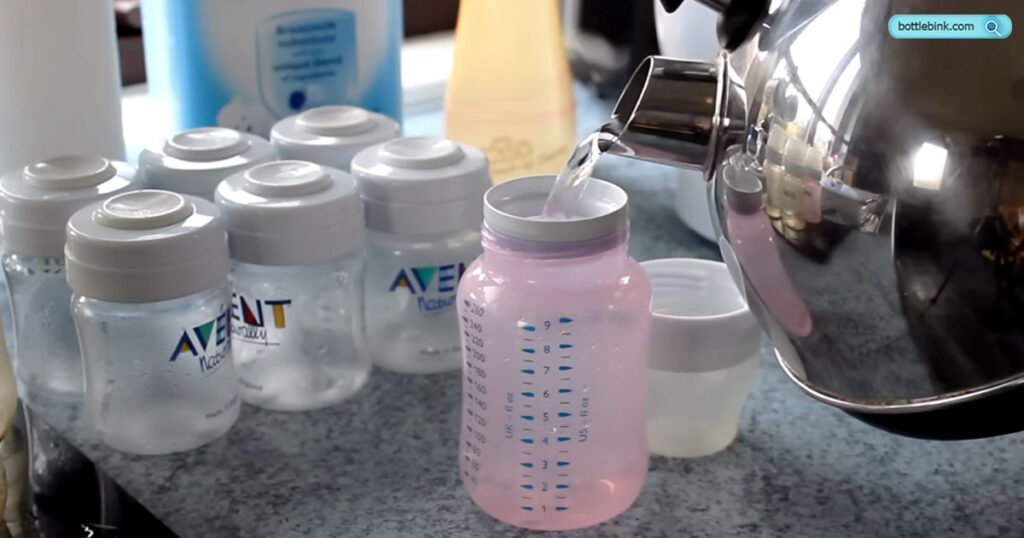
Impact Of Reusing Baby Bottles On The Environment
Reusing baby bottles can have a positive impact on the environment by reducing plastic waste. Proper cleaning and sterilization allow for safe reuse, making it an eco-friendly choice for parents looking to minimize their carbon footprint. Additionally, purchasing new teats when reusing bottles ensures the health and safety of babies without contributing to plastic pollution.
Reducing Plastic Waste
When it comes to the environment, reusing baby bottles can have a significant impact on reducing plastic waste. Plastic bottles are one of the most common single-use plastics, and they contribute to the growing problem of plastic pollution. By reusing baby bottles, we can help minimize the amount of plastic waste that ends up in landfills and our oceans. Reusing baby bottles is a simple but effective way to reduce plastic waste.
Instead of purchasing new bottles every time, parents can opt to clean and sterilize their existing bottles, ensuring they are safe for their baby’s use. This not only saves money but also helps to lessen the demand for new plastic bottles, ultimately reducing the overall production and consumption of single-use plastics.
Eco-friendly Alternatives
In addition to reusing baby bottles, there are also eco-friendly alternatives available for environmentally conscious parents. These alternatives aim to minimize the use of plastic and promote sustainability. Here are a few options to consider:
- Glass Bottles: Glass bottles are a popular choice among parents who want to avoid plastic. They are durable, easy to clean, and do not contain any harmful chemicals. Although they may be slightly heavier than plastic bottles, they are a safer and more sustainable option.
- Stainless Steel Bottles: Another eco-friendly alternative is stainless steel bottles. These bottles are incredibly durable, lightweight, and free from harmful chemicals. They are also easy to clean and can keep liquids at the desired temperature for longer periods.
- Silicone Bottles: Silicone bottles offer a flexible and safe alternative to plastic. They are free from harmful chemicals, durable, and easy to clean. Additionally, many silicone bottles are collapsible, making them convenient for travel and storage.
By choosing these eco-friendly alternatives, parents can play their part in reducing their carbon footprint and protecting the environment for future generations. In conclusion, the impact of reusing baby bottles on the environment is significant.
By reusing bottles and exploring eco-friendly alternatives, parents can contribute towards reducing plastic waste and promoting sustainability. Taking these small steps can make a big difference in preserving our planet for our little ones.
Balancing Cost And Safety In Baby Bottle Usage
When it comes to using baby bottles, one important factor to consider is the balance between cost and safety. On the one hand, using the same bottle multiple times can help save money and reduce waste. On the other hand, ensuring the safety and hygiene of the bottles is crucial for the well-being of your little one.
Economic Considerations
Reusing baby bottles can be an economical choice for parents. With the cost of raising a child continually increasing, finding ways to save money without compromising safety is essential. By reusing bottles, you can reduce the number of bottles you need to purchase, thus reducing expenses in the long run.
However, it is important to note that not all bottles are suitable for reuse. Bottles that are cracked, discolored, or warped should not be reused as these can pose a safety risk to your baby. It is recommended to inspect each bottle carefully before deciding to reuse it.
In addition to reusing bottles, another cost-saving option is to replace the nipples. Over time, nipples can wear out and develop unseen damage, compromising their integrity and potentially causing choking hazards. By regularly replacing the nipples, you can ensure the safe and efficient feeding of your baby without having to purchase new bottles altogether.
Safety Precautions
While saving money is undeniably important, the safety of your baby should always be the top priority. When reusing baby bottles, it is crucial to take the necessary safety precautions to minimize the risk of bacterial growth and contamination.
To ensure the safety of reused bottles, it is essential to thoroughly clean and sanitize them after each use. Use hot, soapy water and a bottle brush to clean the bottles, paying attention to hard-to-reach areas such as the inside of the nipple. Rinse the bottles thoroughly to remove any soap residue.
Sterilizing the bottles is another crucial step to eliminate any lingering bacteria. This can be done by boiling the bottles in a pot of water for a few minutes or by using a bottle sterilizer. Regularly sterilizing the bottles, especially when your baby is young and more susceptible to infections, can provide an added layer of protection.
Credit: www.kleankanteen.com
Frequently Asked Questions Of Can You Reuse Baby Bottles
Can You Use A Baby Bottle More Than Once?
Yes, you can reuse baby bottles as long as they are not broken or damaged. It’s important to clean and sterilize them between uses. Additionally, it’s recommended to replace the bottle nipples if they are cracked or worn out.
How Long Can Baby Bottles Be Used For?
Baby bottles can be used for multiple babies as long as they are not broken or warped. However, it is recommended to replace the teats for hygiene purposes.
Can I Reuse A Baby Bottle Without Sterilizing?
Yes, you can reuse baby bottles as long as they are not broken or warped. However, it is recommended to replace the nipples and teats. Make sure to properly clean and sterilize the bottles before reuse. Cracked, discolored, or warped bottles should not be used.
Can You Reuse A Used Bottle?
Yes, you can reuse a used bottle as long as it is properly washed to ensure hygiene.
Conclusion
Reusing baby bottles is generally safe as long as they are not broken or warped. It is recommended to replace the teats with new ones to ensure proper hygiene. Proper cleaning and sterilization are essential to prevent bacterial growth. However, if the bottles are cracked, discolored, or warped, it is best to replace them.
Taking these precautions will ensure the safety and well-being of your baby.

